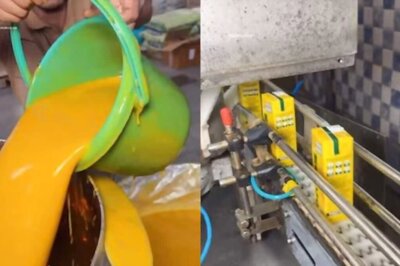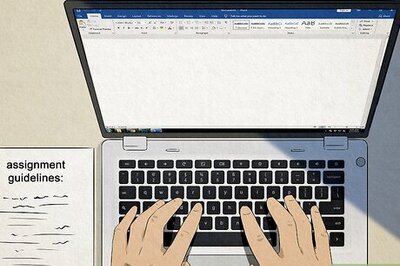
views
New Delhi: The rupee has been reaching new lows every day. Early trade numbers on Wednesday positioned the Indian currency further down to 72.91 against the dollar.
The burgeoning problem of currency is coupled with India’s current-account deficit at a five-year high, elevated oil prices and an emerging-market sell-off. This has resulted in the rupee becoming the worst performing currency in Asia, registering a year-on-year fall of almost 13 percent.
At this time of economic turmoil, pressure on the Reserve Bank of India (RBI) to take stringent action is multiplying by the day. The Centre has written to the apex bank seeking “aggressive steps” for curbing rates. The central bank has already raised interest rates twice since June and depleted billions of dollars to bolster the currency, but with little success.
Problems for India’s rupee are far from over. Soon-to-be-released trade data is likely to portray further widening gap in its trade deficit. The US Federal Reserve is also expected to hike interest rates this month. Due to reasons such as these DBS Bank Ltd. is predicting the currency will weaken as low as 75 per dollar.
The solution, however, is not easy. In order for India to close its trade deficit gap, it needs to reduce imports. Now, imports can only be discouraged if they become costlier. Under normal circumstances, imports can only become dearer when costs rise, that is, when importers pay more money to import the same quantity of goods. This can be only happen when the dollar rates go up, that is the rupee falls, which is the case now.
Let’s have a look at what the RBI and the Centre can do in order to curb rates without raising inflation and worsening trade and capital account deficit:
Convincing NRIs
Non-residential Indians have come to rescue the rupee several times in 1998, 2000 and more recently, in 2013. The Centre is considering the option again. Wealthy NRIs are asked to replenish foreign-currency reserves to take pressure off the Indian currency.
Rate Hike
One of the most common and obvious recourse is for the RBI to its benchmark rates. The central bank raised its rates to a two-year high of 6.5 percent last month and is likely to follow through with more policy tightening in the coming months, pricing in the swap markets show.
The six-member monetary policy committee will make its next rate decision on October 5.
Curtailing Imports
In order to close the trade deficit gap, India can adopt the policy of raising import tarrif. As Indonesia did recently, India can rely on higher duties to curtail imports.
Market Intervention
The RBI intervenes regularly in the foreign-exchange market to smooth volatility. The intervention has taken a toll on foreign exchange reserves. From a record USD 426 billion in mid-April, reserves have fallen to $ 400 billion in August, according to data analysed by Bloomberg.




















Comments
0 comment